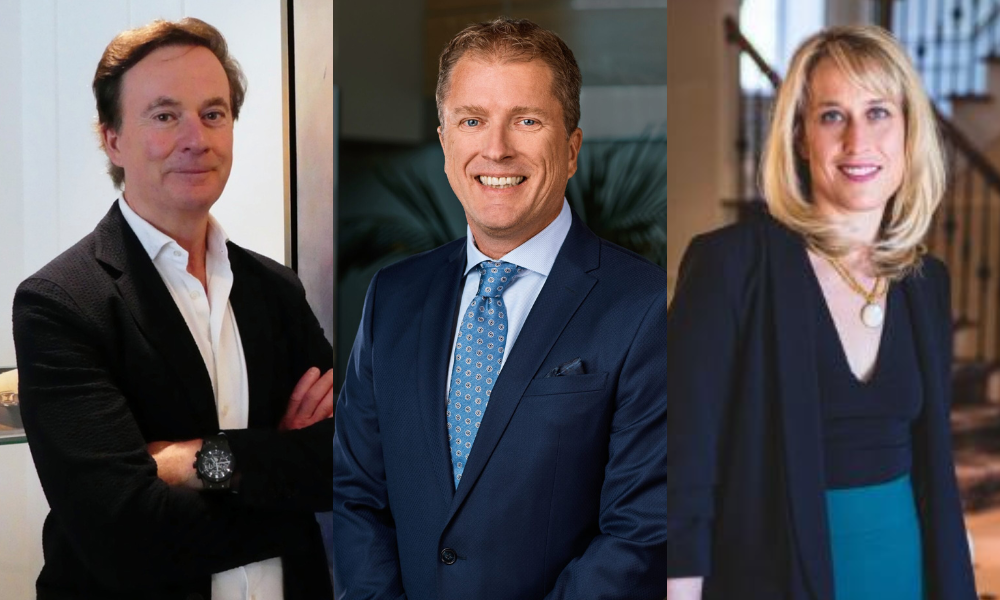CEO, COO, and co-CIO share their views of this crucial market segment and the level of sophistication required of advisors today

Ask what high net worth clients need and the answer can usually boil down to one word: more. More services, more touchpoints, more seamlessness, more returns, more diversification, more sophistication. As these individuals and families grow their wealth and lead increasingly complex lives, they expect that their financial services providers can keep up. That’s the view espoused by Forthlane Partners, an independent asset manager focused on the high net worth (HNW) space. The firm recently announced a leadership change, with Robbie Pryde taking over as CEO.
Pryde joins Forthlane from TD Securities, where he served as executive vice chair and head of corporate and investment banking. Pryde, as well as Forthlane Chief Operating Officer Martha Simmons and Co-Chief Investment Officer Robert Vanderhooft, sat down with WP to discuss how the firm now plans to grow in the HNW market and the approach other advisors may consider taking as they look at these individuals and families.
“Sophistication is the key word,” Pryde says, “It’s a more sophisticated investing environment and family offices are becoming more sophisticated. That’s what we deliver.”
“What a client at that level is looking for, first and foremost, is peace of mind,” Adds Simmons “There are a lot of ways in which they want that, but that’s their overarching goal on the financial side, making sure their money is growing safely and consistently without big drawdowns and without having to worry about timing the market. They want to know that they can access industry leaders and know that the next generations of their family will continue to be well taken care of because of the low volatility in their portfolios.”
Simmons, along with Pryde and Vanderhooft, emphasized the need to deliver high touch service to these clients. The expectation is that these clients can pick up the phone and reach the person responsible for their portfolios. Moreover, there should not be high turnover in who that person or those people are. These clients need bespoke solutions and a real sense of value from their advisors, they need to know that they’re getting what they pay for.
One of the core means by which Forthlane is aiming to achieve that level of value and sophistication is through an asset allocation strategy that goes beyond the traditional 60/40 asset mix. Vanderhooft notes that knitting together a portfolio of public and private assets that also meets the liquidity and quality standards required by these clients can be difficult.
Forthlane incorporates that private asset strategy into a globally diversified portfolio model. They look to offset volatility, mitigate risk, and capture upside opportunities through that diversification.
Running those portfolios requires a significant amount of due diligence and infrastructure. Vanderhooft espouses an institutional model of investment management at Forthlane but highlights how challenging that model can be for other teams to deliver.
“In the past the focus was more on selling,” Vanderhooft adds. “Now you need that depth of team to be able to do the due diligence on managers in different and very complex asset classes.”
Building a firm with scale and skillsets to meet HNW client needs, Simmons explains, begins with an ‘un-siloed’ approach. They advocate for open communication between team members, fostering the opportunity to share expertise and challenge ideas. They’ve built a diverse team, too, with lawyers, accountants, and even one PhD in dispute resolution on the staff to help manage any possible issue for clients. They’ve built a robust compliance infrastructure and strong relationships with regulators to manage any regulatory burdens as well.
Looking at what’s required to serve the HNW space, Simmons, Pryde, and Vanderhooft highlight just how high the barriers to entry have become. A huge amount of expensive infrastructure needs to be in place before the first dollar of client money comes through the door.
As other advisors look at this space, the Forthlane leaders say that an awareness of those barriers is key. They highlight their own examples, the research and diligence they have put into the market, and their belief in sophisticated service offerings as a benchmark. They drive home that when meeting the sophisticated needs of these clients, having a team is crucial.
“The global approach and the level of sophistication will be hard for the average advisor to duplicate,” Pryde says. “But the more they can do that, the better. They can find ways to de-risk without hurting returns, they can do that by being globally diversified and using other asset classes. If you really want to go after the high net worth client, then you need to build a team to do that. It’s a demanding environment, if you want to be a part of it you have to invest in it.”



